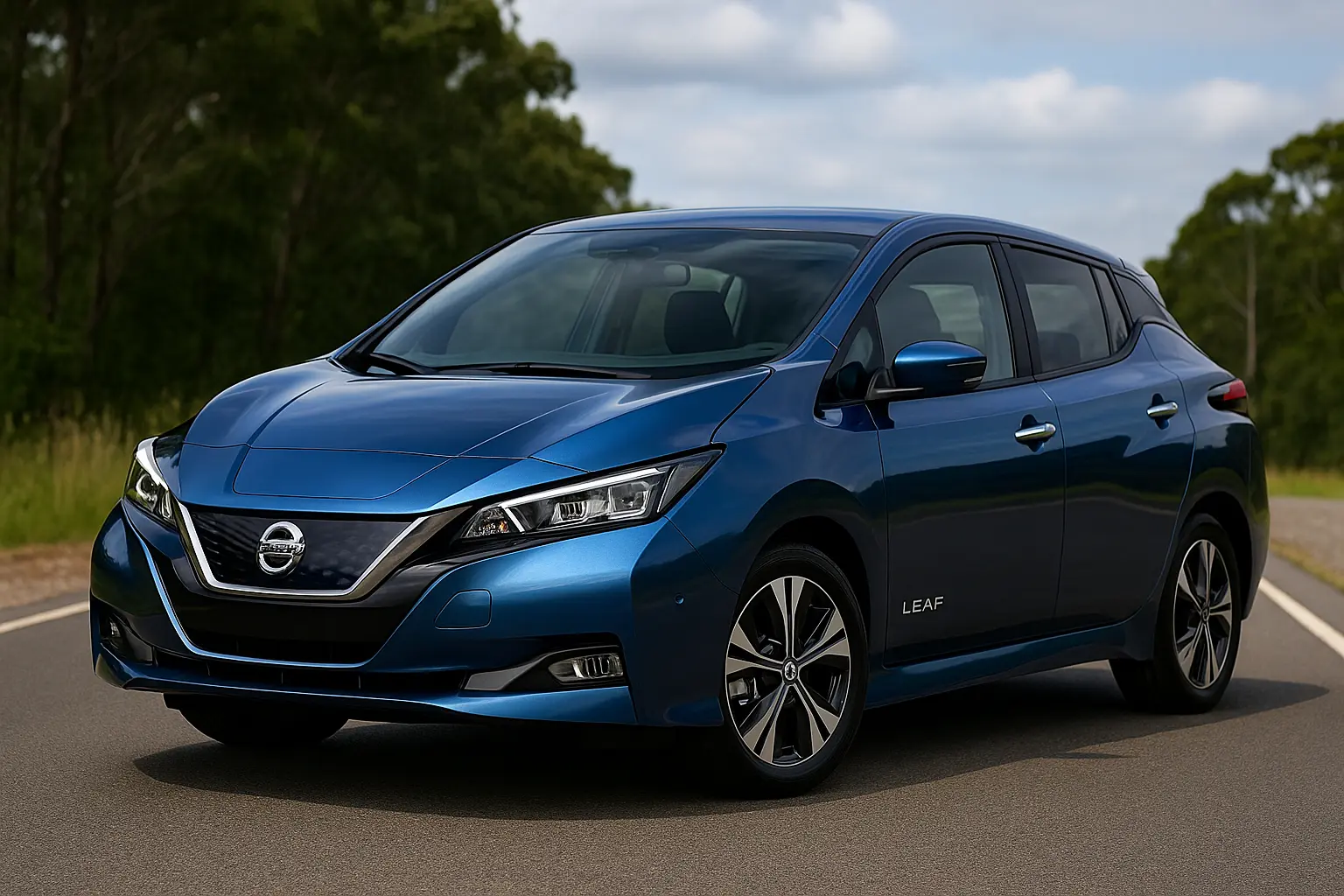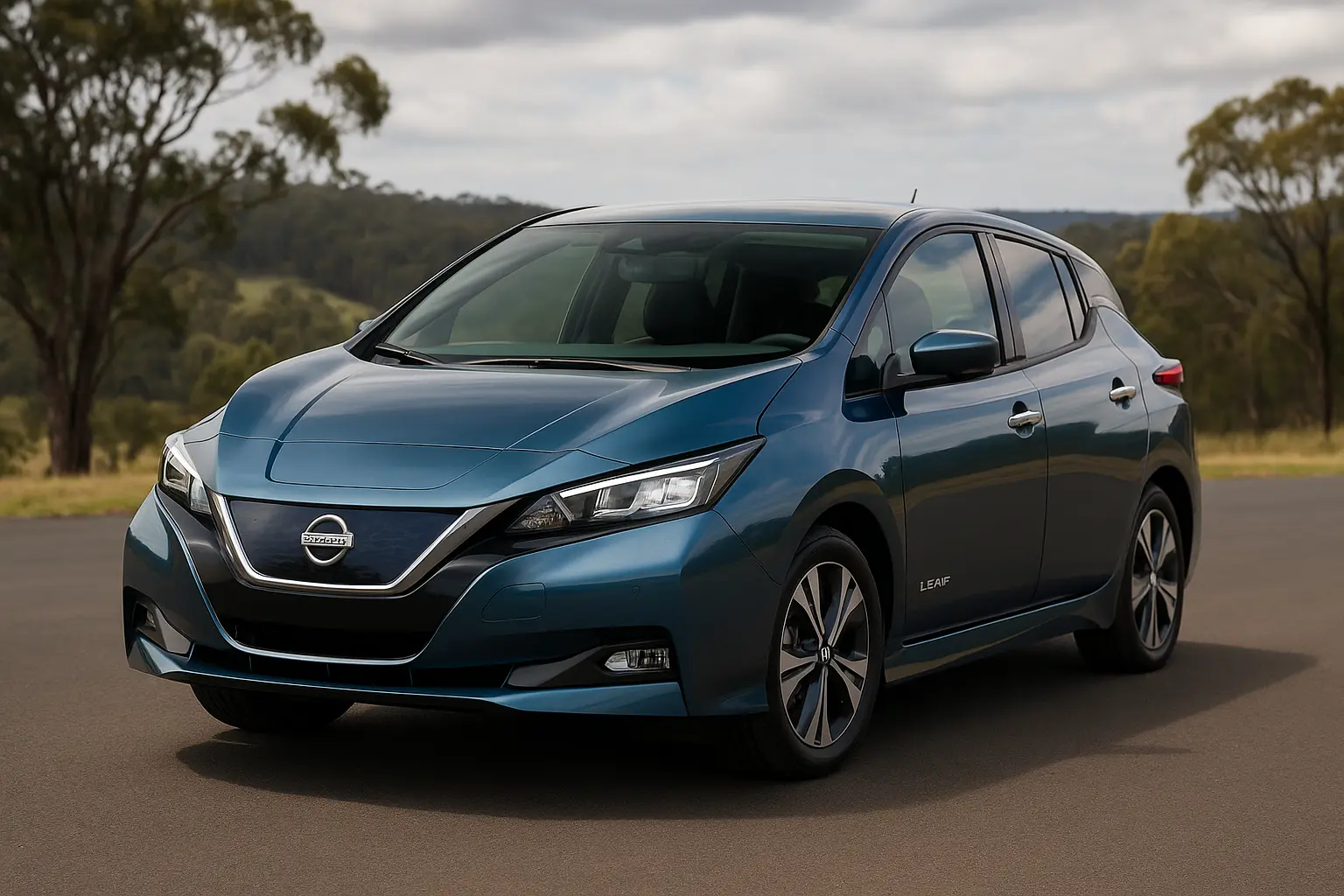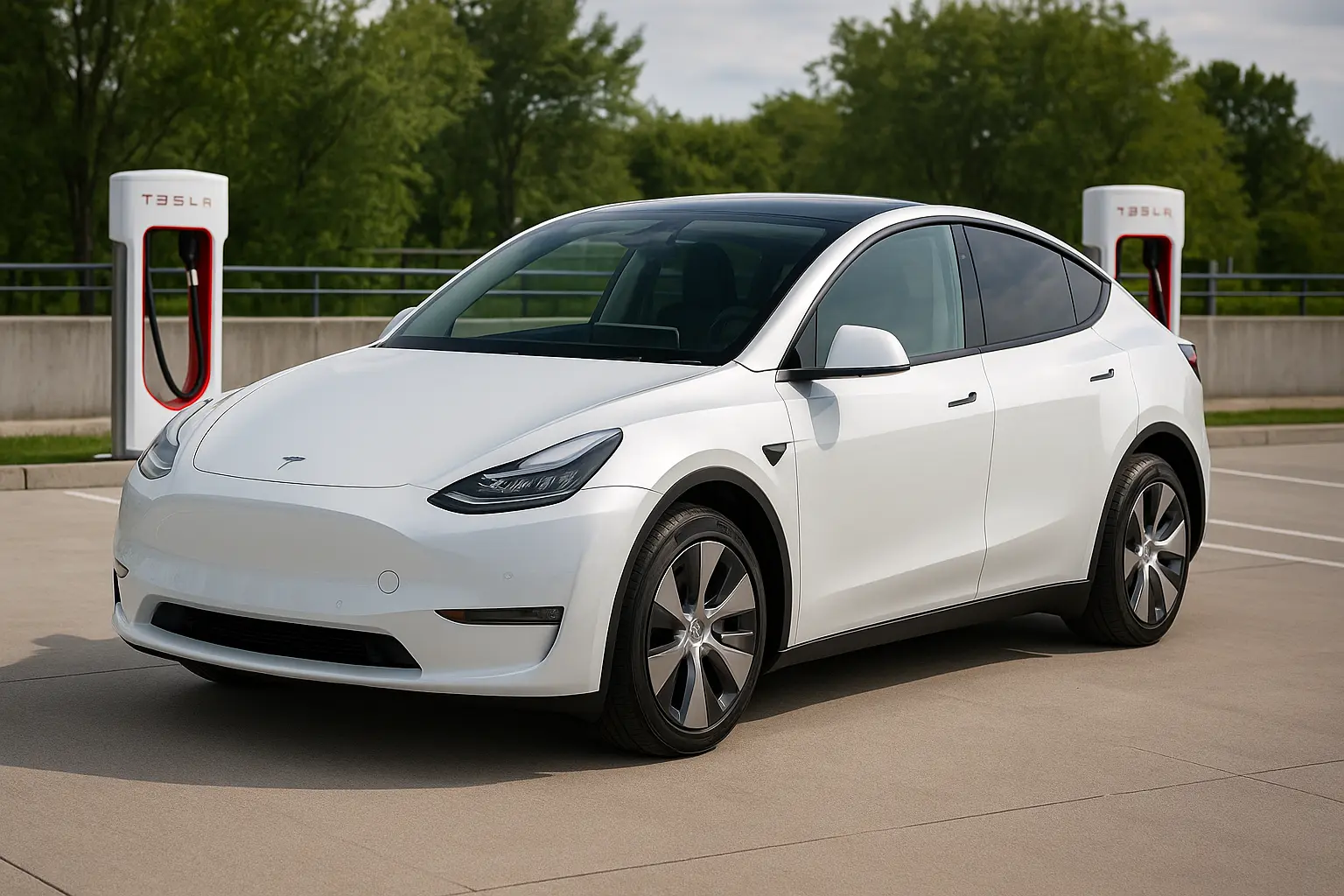The 2025 Nissan Leaf arrives in Australia as one of the most important models for drivers who want to go electric without stretching their budgets. While the EV landscape is increasingly dominated by flashy new entrants and high-priced SUVs, the Leaf has quietly remained a steady, practical choice for everyday Australians. Now in its latest update, Nissan has refreshed the Leaf with more range, enhanced technology, and design tweaks that make it better suited to today’s expectations.
This comprehensive review dives deep into what the new Leaf offers, how it compares with rivals, and why it continues to be one of the best budget electric cars in Australia. Whether you’re a first-time EV buyer or simply looking for an affordable, efficient hatchback, the 2025 Nissan Leaf deserves your attention.

A Quick Look Back at the Nissan Leaf’s Journey
When Nissan introduced the Leaf back in 2010, it was one of the first mainstream electric cars in the world. Its mission was simple: bring EV technology to everyday people without the luxury price tag. Over the years, the Leaf became a global pioneer, selling in the hundreds of thousands and helping normalise the idea of ditching petrol for plug-in power.
In Australia, however, EV adoption took longer to gain momentum. The early Leaf had modest range (just 117 km in its first generation) and a higher price compared to petrol hatchbacks. But with each update, Nissan improved the Leaf’s appeal. By 2018, the second-generation model brought better design and performance. Now, the 2025 Leaf enters a much more competitive market, but it does so with stronger credentials than ever.
Exterior Design – Subtle but Smarter
At first glance, the 2025 Leaf looks familiar. Nissan has opted against a radical redesign, focusing instead on incremental improvements that modernise its appeal. The overall silhouette remains a compact hatchback, perfect for urban Australia where parking space is often at a premium.
Key exterior highlights:
- Sharper LED headlights and taillights: These now feature Nissan’s latest signature lighting pattern.
- Aerodynamic tweaks: Revised bumpers and a sleeker grille reduce drag, helping improve efficiency and range.
- New alloy wheel designs: Available in 16-inch or 17-inch options, they give the Leaf a fresher stance.
- Updated colour palette: New dual-tone finishes and brighter hues cater to younger buyers.
While it doesn’t scream futuristic like some rivals, the Leaf’s understated styling is arguably one of its strengths. It blends into Australian traffic without feeling niche or experimental—an important factor for buyers moving from petrol to EVs for the first time.
Interior Comfort and Features
Step inside the 2025 Nissan Leaf, and you’re greeted with a cabin that has seen a notable technology upgrade while retaining practicality. Nissan understands its audience: families, commuters, and budget-conscious drivers who want value without compromise.
Cabin highlights:
- Digital Instrument Cluster: A new 12.3-inch driver display replaces older analog dials, offering crisp EV-specific graphics.
- Infotainment: The central 10.8-inch touchscreen now supports wireless Apple CarPlay and Android Auto.
- Material upgrades: Higher trims feature recycled eco-friendly fabrics and soft-touch surfaces.
- Space: Being a hatchback, rear seat legroom is adequate for adults, though taller passengers may find it snug. The 435-litre boot remains practical, easily fitting groceries, school bags, or a folded pram.
The Leaf’s cabin has always leaned toward functionality rather than premium flair. In 2025, it strikes a stronger balance between tech and comfort, making it a more attractive family EV option.
Powertrain and Performance
The big news for 2025 is the improved battery and motor package. Nissan has listened to feedback and worked on the areas that matter most: range and efficiency.
Battery and Range
The standard model now comes with a 60 kWh battery pack, replacing the old 40 kWh unit. This delivers a claimed 420 km range (WLTP)—a significant bump over the outgoing Leaf. For most urban Australians, this means a full week of commuting on a single charge.
A larger 72 kWh option is also available, pushing the range to around 510 km, putting it closer to more expensive EV rivals.
Motor and Driving Experience
- Power output: 160 kW (standard) and 180 kW (extended battery).
- Torque: 320 Nm, delivered instantly as with all EVs.
- Acceleration: 0–100 km/h in around 7.2 seconds for the extended battery model.
On Australian roads, the Leaf remains smooth and predictable. Its lightweight hatchback design makes it nimble in city traffic, while motorway cruising is stable and composed. Nissan’s e-Pedal technology—which allows one-pedal driving by regenerating energy when lifting off the accelerator—has been refined for smoother transitions, a big win for daily comfort.
Charging Options
Charging convenience is a crucial factor for any EV buyer. Nissan has expanded the Leaf’s charging capability for 2025 to better fit Australia’s growing charging infrastructure.
- AC charging: Up to 11 kW using a Type 2 connector. A home wallbox can top up the 60 kWh battery in around 6.5 hours.
- DC fast charging: Up to 150 kW. A 10–80% charge can be achieved in just over 30 minutes at compatible stations.
- Portable charging: A 240V cable remains standard, handy for overnight trickle charging at home.
This flexibility makes the Leaf a realistic choice for both city-dwellers and regional drivers who rely on fast-charging networks during long trips.
Safety and Driver Assistance
Safety is one of Nissan’s strong suits, and the 2025 Leaf carries forward a full suite of driver-assistance technologies. It is expected to maintain a 5-star ANCAP rating, thanks to its upgraded safety kit.
Standard safety features include:
- Intelligent Emergency Braking with pedestrian and cyclist detection
- Adaptive Cruise Control with Stop-and-Go
- Lane Keep Assist and Departure Warning
- Rear Cross-Traffic Alert and Blind Spot Monitoring
- Intelligent Around View Monitor with 360° camera
These systems make the Leaf particularly appealing for families and new EV buyers who want peace of mind on busy Australian roads.
Trim Levels and Pricing in Australia
The 2025 Nissan Leaf is offered in multiple trims to suit different budgets. While official pricing is still being finalised, expectations place it between $49,000 and $63,000 drive-away, making it cheaper than many rivals like the Hyundai Kona Electric or Tesla Model 3.
Expected Australian trims:
- Leaf Base (60 kWh) – Essential features, strong value proposition.
- Leaf Plus (60 kWh) – Adds more comfort and safety equipment.
- Leaf e+ (72 kWh) – Extended range, stronger performance, and premium features.
By offering variety, Nissan ensures the Leaf remains accessible while also catering to buyers who want a little more luxury or range.
Comparing the 2025 Nissan Leaf With Rivals
The EV segment in Australia is more competitive than ever. Here’s how the Leaf stacks up against popular alternatives:
- Tesla Model 3: Offers longer range and advanced tech but at a higher price point.
- BYD Dolphin: Aggressively priced but less established in terms of brand trust and long-term support.
- Hyundai Kona Electric: Strong range and features, though smaller boot space.
- MG4 EV: Another affordable option but lacks the Leaf’s decade-long track record and proven reliability.
In this field, the Leaf shines by combining heritage, affordability, and balance. It might not lead in every category, but as an all-rounder, it’s hard to beat.
Ownership, Running Costs, and Warranty
Australian EV buyers care deeply about cost of ownership, and here the Leaf continues to be a strong performer.
- Warranty: 5-year unlimited km vehicle warranty, plus 8-year/160,000 km battery warranty.
- Servicing: Minimal maintenance required compared to petrol cars—no oil changes, fewer moving parts.
- Running costs: Charging at home costs a fraction of petrol refuelling, particularly for households with solar panels.
Nissan has also partnered with various Australian finance and insurance providers to make EV ownership more accessible, including EV-friendly loan packages and insurance deals tailored for battery coverage.
The Leaf’s Role in Australia’s EV Future
Australia is now seeing record EV sales, with government incentives, rebates, and growing charging networks encouraging more drivers to switch. The 2025 Nissan Leaf plays a critical role here by being affordable yet capable, bridging the gap between early adopters and mainstream buyers.
It offers a familiar hatchback design for Australians who don’t want an SUV, while proving that EV ownership doesn’t need to come with luxury price tags. For eco-minded families and cost-savvy commuters, it’s a practical solution.
Final Verdict – Should You Buy the 2025 Nissan Leaf?
If you’re in the market for a budget electric car in Australia, the 2025 Nissan Leaf is one of the most compelling options. It may not dazzle with groundbreaking innovations, but it delivers exactly what most buyers want: solid range, modern features, affordable pricing, and the reassurance of Nissan’s long EV history.
For city driving, family errands, or even longer commutes thanks to the bigger battery option, the Leaf is dependable, efficient, and sensible. It represents what EVs should be about—making electric mobility accessible to all Australians.
Leave a comment
Your email address will not be published. Required fields are marked *




















